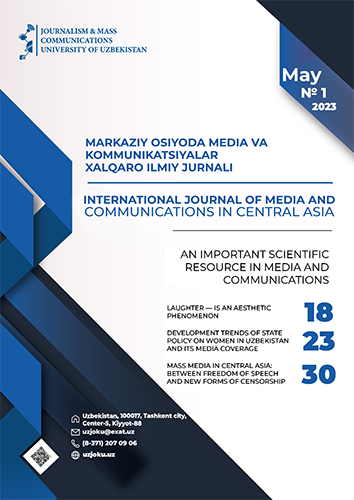Nashr qilingan 2023-12-13
Kalit so‘zlar
- o'quv jarayoni,
- kompetentsiya,
- ijtimoiy va kommunikativ nutq,
- samaradorlik, kompyuter texnologiyalari,
- audio materiallar
- video materiallar,
- ijodkorlik,
- nutq mahorati ...Ko'proq
Iqtibos keltirish uchun
Izoh
Ushbu maqolada universitetlarda chet tillarini o'qitishda ta'lim sifatini oshirishning ba'zi xususiyatlari muhokama qilinadi. Chet tillarni o'qitish jarayonida yuzaga keladigan muammolarni tahlil qilish natijalari keltirilgan. Kompyuter texnologiyalaridan foydalangan holda turli xil audiova video materiallardan foydalangan holda o'quv mashg'ulotlari samaradorligini oshirishga e'tibor qaratilmoqda. Chet tilini bilish darajasini oshirishga yordam beradigan individual o'qitish texnologiyasining imkoniyatlari muhokama qilinadi. Chet tilini o'qitish bo'yicha o'quv jarayonini tashkil qilishda o'qituvchi e'tibor
berishi kerak bo'lgan asosiy omillar taklif etiladi.
Bibliografik manbalar
- Kazantsev A.Yu, Kazantseva G.S. Effective forms and methods in teaching students to listen to foreign language speech in a non-linguistic university using the example of English. Vestnik TSPU (TSPU Bulletin). - 2015. - P. 153.
- Khaleeva I.I. Fundamentals of the theory of teaching the understanding of foreign speech (training of translators). -M.: Higher school, 1989. P.320.
- Khasanova G. K. The need for technology in the design of the pedagogical process //Oriental renaissance: Innovative, educational, natural and social sciences. – 2022. – Т. 2. –№. Special Issue 20. – С. 95-100.
- Khasanova G. K. The essence and significance of the case-study method in the educational process //Oriental renaissance: Innovative, educational, natural and social sciences. – 2022. – Т. 2. – №. Special Issue 20. – С. 778-782.
- Leontiev A.A. Language, speech, speech activity - M .: Education, 1969. P.214.
- Malinina I.A. Use of Internet resources of the second generation Web 2.0 in teaching listening // Young scientist. - 2012. - No. 11. P. 446–448.
- Passov E.I, Kuzovlev V.P, Tsarkova V.B. Foreign language teacher. Skill and personality. –M.: Enlightenment, 1991.
- Reutova E.A. Application of active and interactive teaching methods in the educational process of the university. - Novosibirsk: NSAU, 2012. P.58.
- Schukin A.N. Methods of teaching speech communication in a foreign language. –M.: Ikar, 2011. P. 81–84.
- Shcherba L.V. A ‘new slant’ on modern foreign languages in the school curriculum? August 2017 Curriculum Journal 28 (3):1-33
- Tricia H. Teaching and learning in the language classroom. Oxford: OUP, 2008. P.227–258.
- Vyatutnev M.N. The theory of the textbook of Russian as a foreign language:(Methodological foundations) - M .: Rus. yaz., 1984. P.144.
- Wilhelm H. On Language, On the Diversity of Human Language Construction and its Influence on the Mental Development of the Human Species. Edited by Michael Losonsky, CUP 1999, P. 25-64.
- (1) Zimnyaya I.A. Psychological aspects of teaching speaking in a foreign language, -M.; 1985. P.160.
- (2) Zimnyaya I.A. Psychology of teaching a foreign language at school. –M.; Enlightenment, 1991. P. 222.

